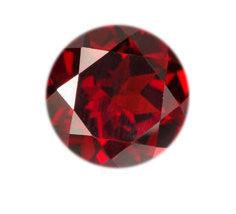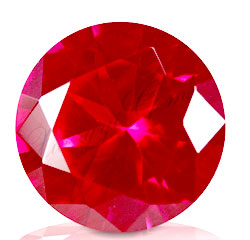This is a post about the most common birthstone colors for the month of January. As you might already know, according to the traditional chart, Garnet is the main birthstone of January.
Some people consider several additional gemstones as birthstones for January, including Ruby and Red Zircon. Both Ruby and Zircon bring an amazing array of red shades that you can choose from either when considering a gemstone for yourself or as a present for some special occasion.
This is already an indication that if you are born in January (which means that if you are either Capricorn or Aquarius) the color of your birthstones should be some shade of red.
 The Capricorn dates are from January 1 to January 20, while the remainder of the month is reserved for those born under the sign of Aquarius.
The Capricorn dates are from January 1 to January 20, while the remainder of the month is reserved for those born under the sign of Aquarius.
When purchasing your birthstones, it is important to select the right color of your gemstone, which in the case of Garnet is deep red color.
Symbolism of the Red Color for January
The Eastern civilizations of China and India have considered red to be the color of good luck and prosperity. Chinese brides used to be dressed in red (along with white), whereas in the Indian culture the red color was a symbol of purity.
Red is the color of fiery energy, one that brings vitality and physical power. It represents determination and strength, passion and sexuality.
 The red color provokes a call to action. It can be used to stimulate intimate passion, but in its negative aspects, red can mean anger, jealousy, revenge, and destruction. That’s why red is often used as a sign of warning.
The red color provokes a call to action. It can be used to stimulate intimate passion, but in its negative aspects, red can mean anger, jealousy, revenge, and destruction. That’s why red is often used as a sign of warning.
Having a little bit of red in your surroundings can be stimulating and uplifting but too much red around you is not the best thing to have. Think a red birthstone ring versus walls painted in red.
All in all, use red gemstone if you want to increase your power, if you hesitate to take action, or if you doubt your abilities.
Origin of the Red Color in Gemstones
The origin of the red color in crystals is almost always due to impurities and defects in the crystal lattice of the gemstones. For example, the characteristic red color of Ruby is a result of less than 1 percent of chromium atoms.
These defect selectively absorb certain wavelengths of the light that passes through the stone and transmit other portions of the light spectrum, so that the end result is the characteristic color of the gemstone in question.
If there were no absorption, the entire spectrum of light would be passing through the crystal, and the gem would appear to us as colorless.
The Different Meanings of the Red Shades
In the theory of colors, you can think of each color as consisting of three distinct components: hue, saturation, and lightness.
 By virtue of the hue we can discern the color, in this case the color Red. The saturation, in turn, tells us how intense the gemstone’s red color is on the scale from vivid to dull. The lightness ranges from light red via medium red to dark red.
By virtue of the hue we can discern the color, in this case the color Red. The saturation, in turn, tells us how intense the gemstone’s red color is on the scale from vivid to dull. The lightness ranges from light red via medium red to dark red.
Having all this in mind, when selecting gemstones, we can assign slightly different meanings to the different shades of red:
- Light red color: sensitivity, joy, sexuality.
- Pink color: love, romance, creativity, intelligence, energy.
- Dark red color: energy, courage, leadership. In its negative version dark red could mean rage, anger, and destructive passion.
- Crimson color: Christian color of liturgy representing humility, atonement, and blood of the martyrs.
- Reddish brown color: a symbol of intense power, harvest and autumn.
How the Red Color Affects You
Even if you are not born in January, you may choose to wear January birthstones, that is, if you want to:
- increase your passion,
- boost your enthusiasm,
- ground your energy,
- attract more protection and security,
- fight anxiety and fears,
- cure apathy,
- increase your self-esteem,
- and stimulate the blood flow.
In either case choose the shade of red you are attracted to the most in Garnet, or in some of the replacement birthstones for January. Garnet is also a perfect stone for the second anniversary.
